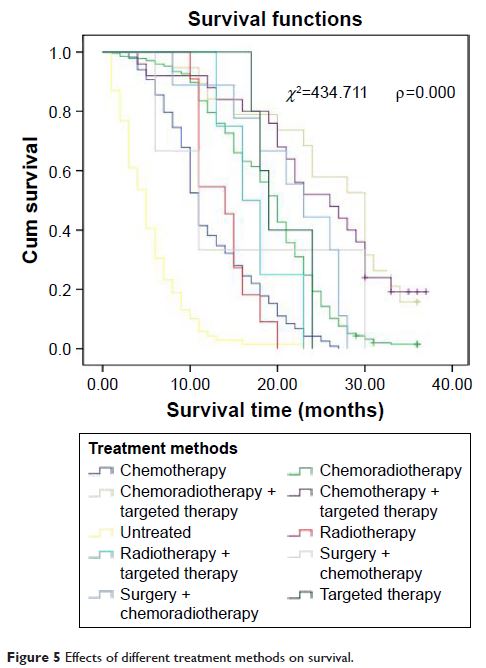100205
论文已发表
注册即可获取德孚的最新动态
IF 收录期刊
- 3.3 Breast Cancer (Dove Med Press)
- 3.4 Clin Epidemiol
- 2.5 Cancer Manag Res
- 2.9 Infect Drug Resist
- 3.5 Clin Interv Aging
- 4.7 Drug Des Dev Ther
- 2.7 Int J Chronic Obstr
- 6.6 Int J Nanomed
- 2.5 Int J Women's Health
- 2.5 Neuropsych Dis Treat
- 2.7 OncoTargets Ther
- 2.0 Patient Prefer Adher
- 2.3 Ther Clin Risk Manag
- 2.5 J Pain Res
- 2.8 Diabet Metab Synd Ob
- 2.8 Psychol Res Behav Ma
- 3.0 Nat Sci Sleep
- 1.8 Pharmgenomics Pers Med
- 2.7 Risk Manag Healthc Policy
- 4.2 J Inflamm Res
- 2.1 Int J Gen Med
- 4.2 J Hepatocell Carcinoma
- 3.7 J Asthma Allergy
- 1.9 Clin Cosmet Investig Dermatol
- 2.7 J Multidiscip Healthc

对 539 例 IV 期肺癌患者初步诊断和治疗的临床研究
Authors Shao Q, Liu S, Wang W, zhang Y, Li F, Li J
Received 19 October 2016
Accepted for publication 25 December 2016
Published 31 January 2017 Volume 2017:10 Pages 535—541
DOI https://doi.org/10.2147/OTT.S125108
Checked for plagiarism Yes
Review by Single-blind
Peer reviewers approved by Dr Colin Mak
Peer reviewer comments 2
Editor who approved publication: Dr Yao Dai
Objective: The aim of the study was to analyze clinical data, including the types
of pathologic classification, metastatic organs, treatment strategy, and
prognosis of patients with stage IV lung cancer.
Methods: A retrospective analysis of the clinical features of
539 patients with stage IV lung cancer who were initially diagnosed and treated
in 2009 was conducted. There were 146 cases of single organ metastases and 393
cases of multiple organ metastases. The Kaplan-Meier method and multivariate
Cox regression analysis were performed to analyze the influence of age,
pathological classification, metastatic organs, and treatment strategy on
overall survival.
Results: The 1-, 2-, and 3-year survival rates were 64.2%
(n=346), 19.7% (n=106), and 1.5% (n=8), respectively. Metastases to the liver
and pleura predicted poor prognosis, although bone metastases predicted
relatively good prognosis. The prognosis of single brain metastasis was
relatively better than that of multiple brain metastases. Multi-factor analysis
showed that the patient’s age, different metastatic organs, the numbers of
metastatic organs, and different treatment were independent risk factors for
survival.
Conclusion: The prognosis for patients with stage IV lung cancer
is poor. Patient’s age, the type and number of metastatic organs, and method of
treatment are the main factors affecting survival.
Keywords: carcinoma/lung,
diagnosis, therapy, prognosis, clinical analysis
